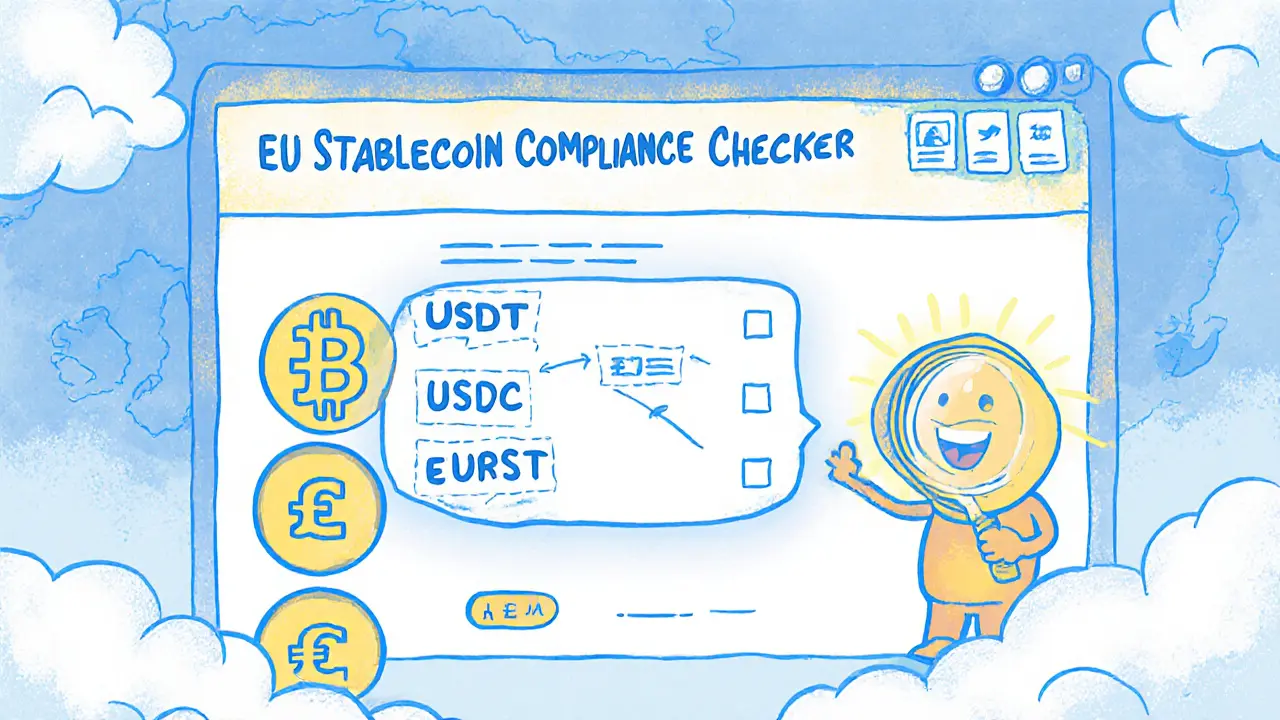EU Stablecoin Restrictions
When talking about EU stablecoin restrictions, the set of rules the European Union applies to fiat‑pegged and algorithmic stablecoins, you’re really looking at a fast‑moving piece of the crypto puzzle. These limits aim to protect investors, curb money‑laundering, and keep the broader market stable. In practice, the restrictions tie directly into how stablecoins, digital tokens designed to hold a steady value against an underlying asset like the euro or the dollar operate across the continent. Think of it as a safety net that lets users enjoy low‑volatility payments without exposing the system to hidden risks.
One of the biggest drivers behind the rules is the EU’s Markets in Crypto‑Assets Regulation, better known as MiCA, a comprehensive framework that sets licensing, capital, and consumer‑protection standards for crypto‑related services. MiCA doesn’t just slap a band‑aid on the market; it reshapes how issuers design token economics, how they report reserves, and how they interact with traditional banks. For example, a stablecoin issuer must keep a transparent reserve of euros or other approved assets, and they must undergo regular audits to prove those reserves exist. This gives regulators, like the European Central Bank, the central monetary authority for the eurozone, a clear line of sight into liquidity and solvency, lowering the chance of sudden de‑pegging events that have plagued other markets.
Why the Restrictions Matter for Users and Businesses
First, stablecoins are a practical answer to crypto volatility. By pegging to a stable asset, they let traders move funds quickly without the price swings you see with Bitcoin or Ethereum. That speed is gold for digital payments, cross‑border remittances, and even DeFi lending. Second, the EU’s rules shape how crypto exchanges list and handle these tokens. Exchanges now have to verify that a stablecoin’s reserve meets EU standards before they can offer it to customers. This extra step adds confidence for everyday users who might otherwise worry about hidden risks.
The ripple effect reaches compliance teams, too. Companies that operate in the EU must align their AML/KYC procedures with the new standards, meaning they need tighter identity checks and more robust transaction monitoring. The result? Fewer illicit flows and a clearer audit trail for regulators. At the same time, businesses get a level playing field: all stablecoin providers must meet the same baseline, so competition focuses on features, fees, and user experience rather than regulatory loopholes.
Looking ahead, the restrictions also influence innovation. Token designers are experimenting with hybrid models that combine fiat reserves with algorithmic controls to stay within MiCA’s limits while offering higher yields. Meanwhile, the European Central Bank is exploring its own digital euro, which could coexist with private stablecoins under the same regulatory umbrella. That synergy could create a richer ecosystem where public and private digital currencies support each other, rather than compete.
All of this sets the stage for a nuanced landscape where stability, compliance, and usability intersect. Below, you’ll find articles that break down each piece— from how stablecoins tame crypto volatility in 2025, to deep dives on MiCA’s impact on Cyprus, to practical guides on navigating EU crypto regulations. Whether you’re a trader, a developer, or just curious about the future of digital money, the collection gives you the context and actionable insights you need to move forward with confidence.
EU Stablecoin Restrictions Explained: USDT and Other Tokens
by Johnathan DeCovic Nov 21 2024 19 CryptocurrencyA clear guide to EU stablecoin restrictions under MiCA, covering USDT compliance, impact on providers, and steps to stay legal.
READ MORE
